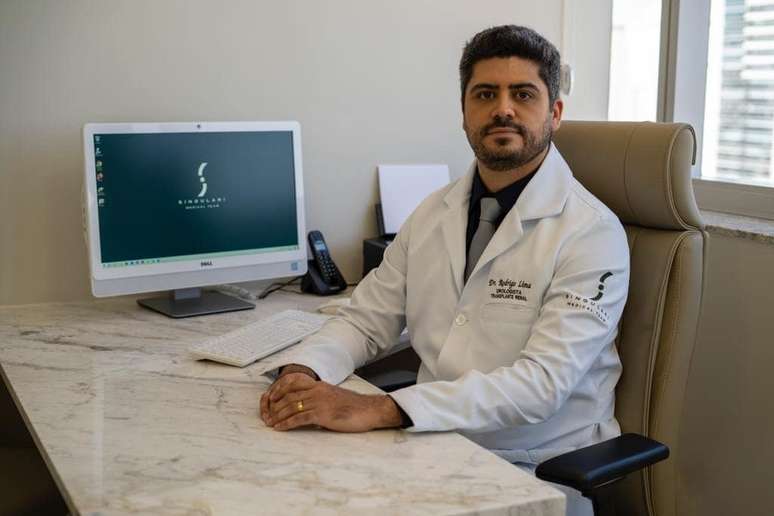The expert explains that conditions such as benign prostatic hyperplasia are commonly confused with malignant diseases
Summary
Prostate care is expected to be a growing concern among men, especially after age 50, due to benign prostatic hyperplasia (BPH). Regular tests are essential for early diagnosis and effective treatment.
Prostate care should be a growing concern among men, especially after age 50. The reality, however, is that many avoid seeking medical attention when they notice related symptoms, such as difficulty urinating or increased urinary frequency, fearing that these signs indicate cancer.
This is because, as experts warn, the majority of the population is not aware of the fact that prostate symptoms do not always indicate the presence of a malignant tumor, and are normally confused with problems such as benign prostatic hyperplasia (BPH), which they are generally treatable. without major risks.
BPH is a noncancerous enlargement of the prostate and affects most men over the age of 50. Around 50% of individuals above this age range will have BPH, while, by age 90, the condition affects around 80% of men. Its symptoms include the frequent need to urinate at night, a weak urinary stream and the sensation of a bladder that is not completely empty.
Although these signs can be bothersome, the condition is benign and, in many cases, can be controlled with appropriate treatment. “It is essential that men understand that, unlike cancer, BPH rarely leads to serious complications, such as loss of erection or urinary incontinence,” explains urologist Rodrigo Lima.
Although BPH is a common and treatable condition, many men delay treatment. consultation doctor for fear of the possible consequences of the treatment. Fear of invasive surgery or harm to their sexual health leads many to ignore the symptoms, which can worsen the condition and lead to more serious complications, such as kidney failure and recurring urinary infections.
Furthermore, quality of life can be seriously affected by difficulty sleeping and irritability caused by the constant need to go to the bathroom during the night.
Treatment options
Modern treatments for BPH have evolved significantly in recent years. Techniques such as endoscopic laser enucleation (HoLEP) offer less invasive alternatives with a lower risk of side effects.
One of the more modern options, the Rezum method uses water vapor to reduce the size of the prostate and can be performed on an outpatient basis, with light sedation and without the need for hospitalization. Furthermore, it can preserve ejaculation in up to 80% of cases, an advantage over other techniques, which have preservation rates of 20 to 30%.
“Today the fear of treatment is no longer justifiable. The new techniques are safe, effective and have a much smaller impact on patients’ sexual health,” says Rodrigo Lima.
Recovery is faster and the risks of complications, such as sexual impotence and urinary incontinence, are minimized. However, a lack of information about these options still leads many men to put off visiting the doctor, which can lead to serious long-term consequences.
Consequences of hesitation
Hesitation to see a doctor is a common reality among men who, for various reasons, have been more reluctant to seek healthcare. According to data from the Ministry of Health, at least 31% of the male population does not have the habit of going to the doctor, and research indicates that men go, on average, four times less often to the doctor than women.
Situations like these contribute to the high death rate from diseases such as prostate cancer, which, according to the National Cancer Institute (INCA), is the second most common type among men in Brazil and causes almost 30% of male deaths in Brazil. Village.
This disease, in many cases, evolves silently. Therefore, performing regular tests, such as PSA (prostate specific antigen) and digital rectal examination, is essential to detect changes in the prostate and allow for early diagnosis.
Rodrigo Lima emphasizes that, despite the effectiveness of these tests in detecting changes in the prostate, the decision to perform them should be discussed with a doctor, considering factors such as family history, age and other risks. “Early diagnosis is critical to the effective treatment of prostate cancer. Men over 50 should have a PSA and rectal exam annually. Those with family history or risk factors should start the evaluation at 45″, warns the specialist.
It is essential that men educate themselves about treatment options and seek medical care regularly. Modern treatment options for prostate problems have evolved to offer less invasive options, with lower risks to sexual health and quality of life.
“Ignoring symptoms or putting off treatment can lead to serious complications, but with proper medical monitoring, many prostate problems can be treated effectively, without lasting negative health effects,” Rodrigo points out.
inspires transformation in the world of work, in business, in society. Compasso, a content and connection agency, is born.
Source: Terra
Ben Stock is a lifestyle journalist and author at Gossipify. He writes about topics such as health, wellness, travel, food and home decor. He provides practical advice and inspiration to improve well-being, keeps readers up to date with latest lifestyle news and trends, known for his engaging writing style, in-depth analysis and unique perspectives.



-vbnfqu6x671s.png)




